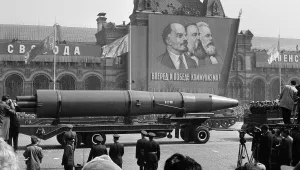Abstract
Seventy-five years ago, on June 22, 1941, Nazi Germany attacked the Soviet Union, betting on a brief war with the firmest of goals, a type of war that came to be known as blitzkrieg.
By June 1941 the German Wehrmacht had evolved into one of the most powerful and effective military machines in history. The German armed forces had refined their blitzkrieg techniques to what seemed like perfection during their campaign against Poland in 1939 and their rout of the French and their allies in 1940.
Germany’s plans to attack the USSR were heavily influenced by Adolf Hitler’s racist, anti-Semitic and anti-Bolshevik postulates, which he had largely formulated much earlier in his agenda-setting book Mein Kampf. Joseph Stalin failed to fully take into account the highly ideological nature of Hitler’s political and military-strategic thinking; this led to mistakes in interpreting the Third Reich’s plans vis-a-vis the Soviet Union.
Making sure that the German attack would catch the Soviets by surprise on a tactical, operational and even strategic level was one of the most important components of planning the blitzkrieg. To that end Berlin conducted an unprecedented disinformation campaign that proved largely successful.
The enormous might of Hitler’s Wehrmacht in 1941 lay in the quality of its personnel, its optimized organizational decisions (regarding operations in tank groups, air fleets and other formations), its top-notch operational art and tactics and in the fact that many of its weapons systems and military technologies were well matched to the blitzkrieg’s objectives.
The summer and autumn of 1941 saw the Wehrmacht deal a number of very heavy defeats to the Red Army. It took extraordinary efforts on the part of the Soviet armed forces and the entire country to stop the enemy and then inflict a series of defeats that played a crucial role in Nazi Germany’s decision to surrender in May 1945.
Hitler’s Wehrmacht suffered its first major defeat outside Moscow in December 1941. This put an end to the blitzkrieg as a phenomenon of that period of history. However, three and a half more years of bloody battles lay ahead as part of World War II, which saw the Soviet Union, the United States, the United Kingdom, China and France act as allies against a most dangerous common enemy.
Read the full paper by downloading the PDF below:
Kokoshin, Andrei A.. “The German Blitzkrieg Against the USSR, 1941.” Belfer Center for Science and International Affairs, Harvard Kennedy School, June 2016



